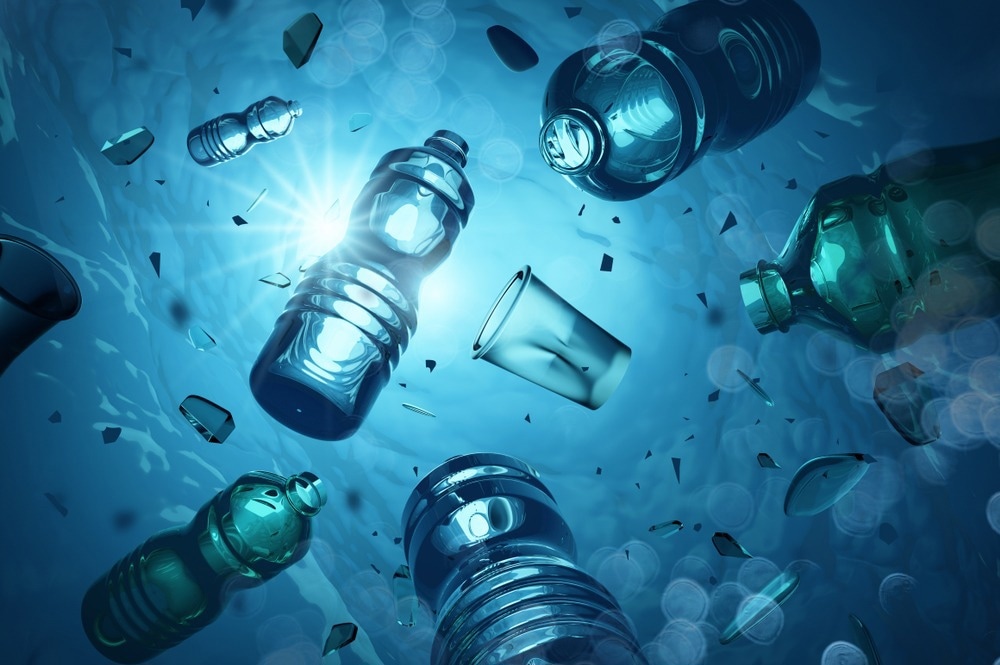A new open-access Raman spectral library developed by research led by the Monterey Bay Aquarium and MBARI (Monterey Bay Aquarium Research Institute) can be used to identify molecular “fingerprints” of particles and more accurately identify the sources of ocean plastic pollution.

Image Credit: solarseven/Shutterstock.com
The study, which was published in the journal Scientific Data, provides scientists with a wider range of free resources than those that were previously accessible.
To avoid misidentification and boost the precision of the results, it adds 42 polymer types that are absent from other open-access libraries and is the first to include polymers from non-plastic particles like seagrass, shells, and animal tissues.
A library of polymer types is created in the study to match both known and undiscovered plastic pollutants. Researchers from the aquarium think that other scientists will create and use open-access libraries with an increasing variety of polymer types to better comprehend and address the crisis of global plastic pollution.
Ocean plastic pollution is a global problem that will take an international community of scientists to help address. Scientists first need to identify microplastics to recommend how to prevent each pollution pathway. Many researchers cannot afford access to the plastic spectral libraries needed for identification and their critical work is blocked. We didn’t want to create a barrier for others, so our team intentionally made this spectral library available to all.
Emily Miller, Study Lead Author and Senior Research Fellow, Monterey Bay Aquarium
It is more difficult than it seems to identify microplastic particles. It can be challenging to tell an organic fiber apart from a plastic fiber, even when using a microscope. To identify the study’s small, unidentified materials, researchers used Raman spectroscopy.
When a laser is directed at a sample material, the light scatters according to the chemical structure of the material, creating a distinct molecular fingerprint. To identify the substance, this fingerprint is compared to those of well-known plastics in a library.
The library was later built by scientists, allowing the identification of more than forty different kinds of plastics. The data primarily focuses on systems in the nearshore Pacific Ocean and includes plastics related to coastal agriculture and fisheries.
To prevent misidentification, the library contains both fresh and weathered plastics as well as non-target biological polymers that are frequently found in marine environments.
Overall, the study adds 18 new biological types and 24 new plastic types that were not present in earlier databases. Two of these new plastic types came from sources such as marine fishing gear.
Microplastic pollution can be found in almost all marine habitats on Earth, according to a 2019 study conducted by the Monterey Bay Aquarium and MBARI. According to scientists, more than nine million tons of plastic enter the ocean from land each year.
The types of plastic in the ocean and other environments must be identified to address the crisis of global plastic pollution. This will aid in figuring out how and from what source the plastic entered the environment.
This study can help focus efforts worldwide to reduce plastic pollution because only 9% of plastic is recycled annually, and plastic harms wildlife species like sea turtles, marine mammals, and seabird species.
In addition to acting as a crucial database, the open-access library can remove obstacles to crucial information, such as expensive paywalls, allowing all scientists to collaborate on understanding and finding a solution to the widespread problem of plastic pollution.
The 2021 report “Reckoning with the US Role in Global Ocean Plastic Waste” from the National Academies of Sciences, Engineering, and Medicine will also help researchers who are trying to close knowledge gaps on the sources of microplastics.
The Aquarium is committed to addressing the plastic pollution crisis to improve the health of our ocean and our planet. We need the best science to develop the best solutions and drive progress from the local to international level, including the creation of a new global plastic pollution treaty.
Aimee David, Vice President, US and California Ocean Conservation, Monterey Bay Aquarium
David added, “By unlocking key information to identify the types of plastic in the ocean, scientists can use the new Raman spectral library to connect ocean pollution to its sources around the world.”
Journal Reference
Miller, E. A., et al. (2022) A Raman spectral reference library of potential anthropogenic and biological ocean polymers. Scientific Data. doi:10.1038/s41597-022-01883-5.